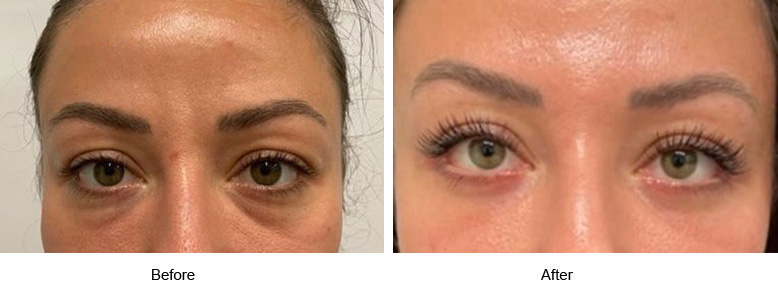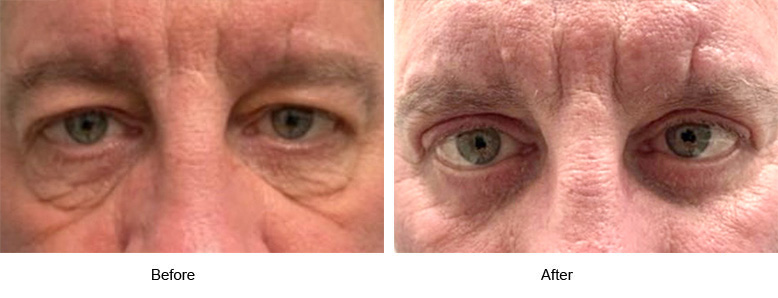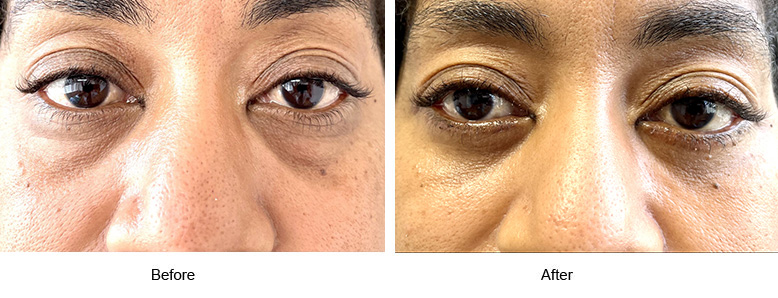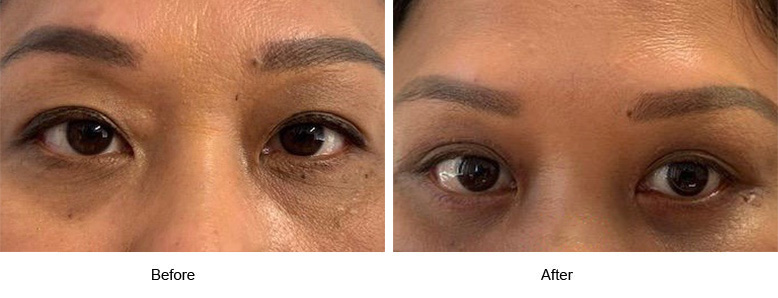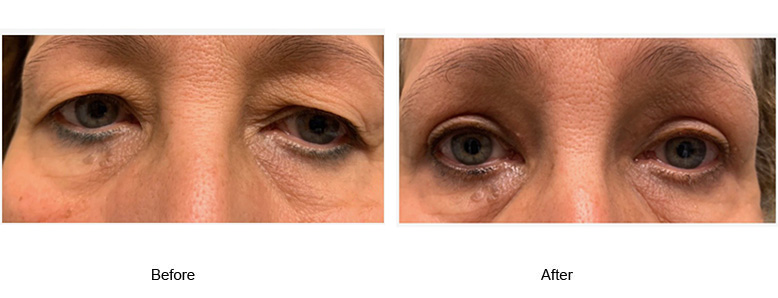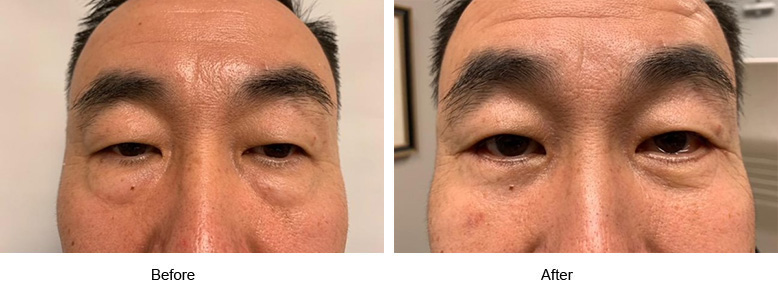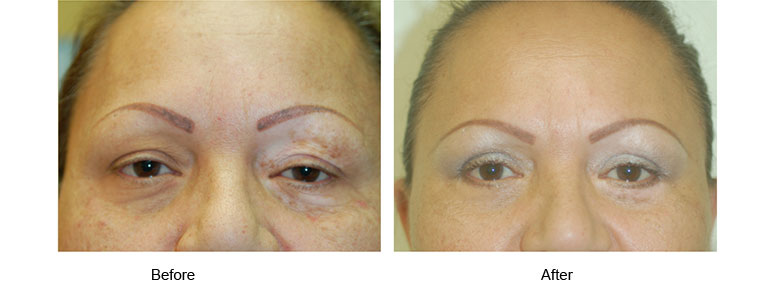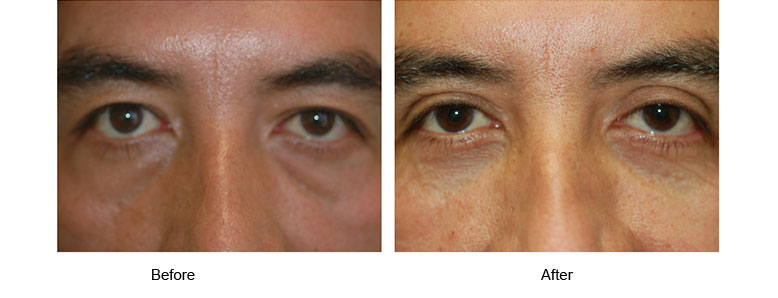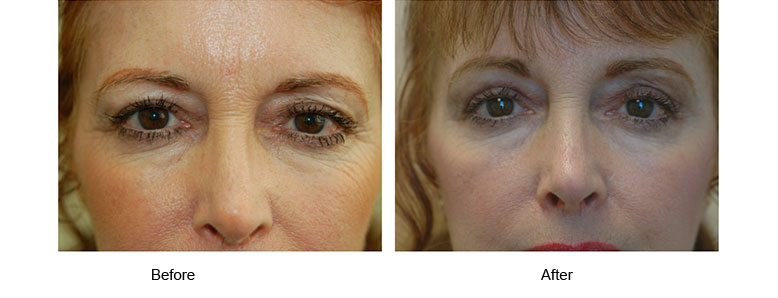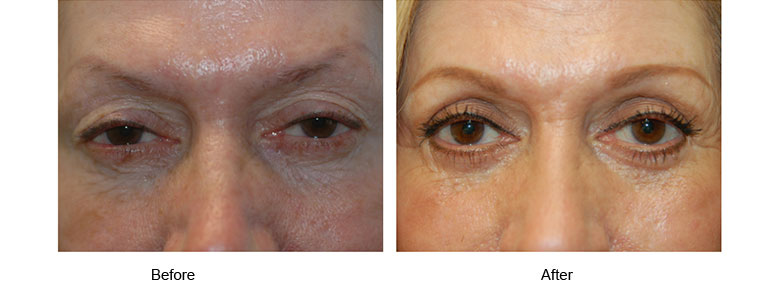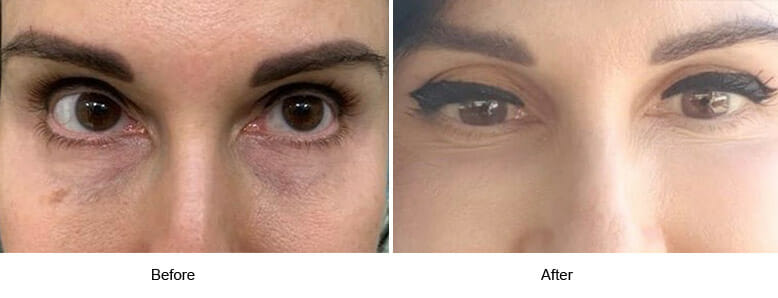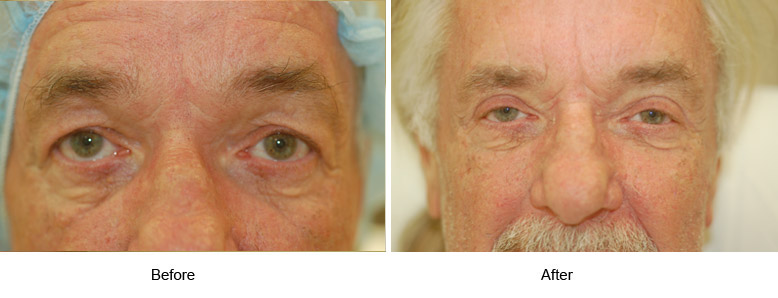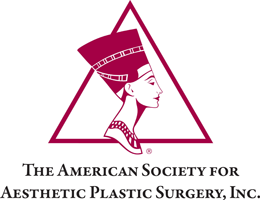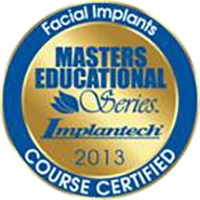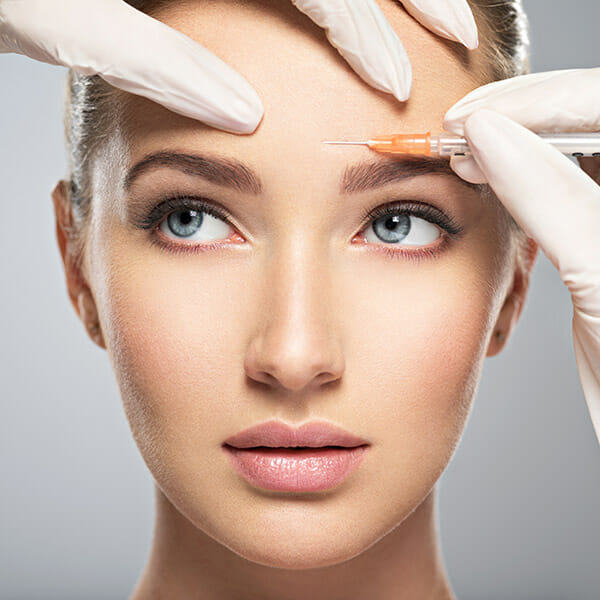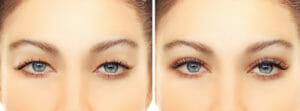
Eyelid Surgery in San Francisco, CA
- About eyelid surgery
- Before & After
- Are you a candidate for eyelid surgery?
- About the operation
- What to expect after the surgery
- Your Recovery
- Possible complications
- FAQs About Eyelid Surgery (Blepharoplasty)
About Eyelid Surgery (Blepharoplasty) in San Francisco, CA
Our eyes are considered by many to be the most important features of our face. Over time their beauty can be greatly reduced by excess skin creases and eye bags. Eyelid surgery, technically referred to as blepharoplasty, is a procedure to reduce excess fat, skin, and muscle from the upper and lower eyelids. Blepharoplasty is often performed in conjunction with other facial surgery procedures such as facelifts, though it can be performed alone as well.*
For most people, the aging process involves the stretching of the eyelid skin resulting in excess folds, wrinkles, and sagging of the fat around the eye itself. Heredity can also be a factor when younger or middle-aged people experience changes that are usually associated with advanced age. For these people, regardless of how much sleep they get each night, they wake up looking tired and as if they had not slept at all.*
A properly performed San Francisco blepharoplasty procedure by a certified plastic surgeon will brighten the face and restore a more youthful appearance. Additionally, in some patients, this procedure can improve sight by diminishing the excessive skin of the upper eyelids which can hang down and interfere with peripheral vision.*
Before and After Blepharoplasty Surgery
*Individual results will vary in each patient.Are You a Candidate for Eyelid Surgery?
The strongest candidates are those who are healthy, psychologically stable and well-motivated. Most patients are 35 or older, but if droopy, baggy eyelids run in your family, you may decide to have eyelid surgery in San Francisco at a younger age. Should you decide to have a consultation with Dr. Javaheri, he will talk to you about your goals and your general medical history. He will ask specifically about any current medical conditions that may result in an increased risk should blepharoplasty surgery be performed, including thy-roid disease, high blood pressure, or tear production disturbances.*
About the Blepharoplasty Operation
Eyelid surgery is usually performed on an outpatient basis and normally takes between 45 and 90 minutes depending on the extent of your surgery.*
Either local or general anesthesia will be used depending on a number of factors. For local anesthesia, the skin around your eyes will be numbed using an injection. This is usually accompanied by some intravenous sedation to help you feel relaxed and tolerant of any potential pain. For general anesthesia, you will be completely asleep. Dr. Javaheri will discuss with you which type of anesthetic will be most suitable for you during your consultation.*
What to Expect After the Blepharoplasty (Eyelid Surgery)?
Following your Blepharoplasty surgery you will have cool compresses applied to the eye region and will spend a short amount of time under observation to ensure that there is low risk of bleeding afterwards.
The upper eyelid suture will consist of a single very fine line beneath the skin surface, while the lower eyelids will have three to four small individual sutures held in place with a small strip of tape. The sutures are usually extracted at the end of three days. An application of antiseptic eye ointment will be applied postoperatively and may result in the blurring of your vision temporarily.
Occasionally, absorbable sutures are used if you are a good candidate. It is recommended that a large pair of sunglasses be worn to help protect your eyes and hide the effects of the surgery.
Once you have returned home, carefully read and follow the postoperative instructions and guidelines provided by Dr. Javaheri, and contact him if you have any questions or concerns.*
Eyelid Surgery (Blepharoplasty) Recovery
After the eyelid surgery in San Francisco, you will experience swelling and bruising around the eyes. The amount of swelling varies from case to case depending on the extent of your surgery. In addition, you may experience a slight leakage of blood from the incisions, and your eyes may be “gummy” for a week or so afterward.
It is important that your eyelids are not rubbed in any way. Most of the swelling normally subsides after the first ten days following your operation. However, bruising around your eyes may persist for a longer period, often up to one month. The elevation of your head, avoidance of any stooping, and the use of cold compresses will help reduce the swelling and bruising typically associated with this surgery.*
In addition, your eyelids will probably feel sore and tight as the anesthetic wears off. For most patients, it is normal for this to continue for a few days afterward, and mild painkillers will alleviate these effects.It is also common for many patients to experience a feeling of numbness in their eyelid region. This is to be expected and normal sensation usually returns relatively quickly in the weeks following your surgery.
However, on rare occasions, this may be delayed and may take up to several months. Some patients may experience dryness in the eyes post-operatively which is usually resolved in a few weeks and can be temporarily resolved with eye drops.*
Please also be aware that some scarring will occur as a result of your surgery. Variations in the healing process do occur from individual to individual, but overall scars heal relatively well from this surgery. The scars along the side of the eyelashes usually heal with a near-invisible line once several months have passed.
Those extending out into the crow’s feet area can become a little reddened and lumpy sometimes requiring additional time to recover completely. The massaging of these scars can speed up the recovery process and is recommended in most cases.*
After several days, you should be able to read or watch television comfortably. If you wear contact lenses, you will need to refrain from wearing them for at least two to three weeks. It is recommended that you plan on taking it easy for the first week following your surgery. During this time, get plenty of rest and allow your body to spend its energy on healing.*
Once a week has passed you should be able to go back to work and return to your normal daily routine. Though you will still experience some bruising, it can be masked with light makeup.
It is important that you wear sunglasses and sunblock when outdoors as you may be sensitive to sunlight, wind, and other irritants for several weeks. It is especially important to avoid activities that may raise your blood pressure, including vigorous physical activities, bending, or lifting.*
Possible Blepharoplasty Complications
As with all surgical procedures, there is always some risk involved. In most cases, complications are infrequent and are usually minor. However, each surgery and period of recovery is never completely predictable as there are many variables that can influence the final outcome.*
During your consultation with Dr. Javaheri, he will explain to you the possible risks and complications often associated with your procedure. It is important that you follow the specific advice and instructions provided by Dr. Javaheri before and after your eyelid & blepharoplasty surgery in order to help avoid possible complications.*
How much does eyelid surgery (blepharoplasty) cost in San Francisco?
The average cost of upper eyelid surgery (upper blepharoplasty) starts around $4,000, and lower eyelid surgery (lower blepharoplasty) begins around $4,000. Costs will vary depending on factors such as the complexity of the surgery, anesthesia, and surgeon expertise. Find a board-certified plastic surgeon to ensure that you’re in the best hands possible.
Call 855.923.3800 to schedule an appointment to discuss eyelid surgery in San Francisco or Berkeley
*Results for each patient will vary. Please remember that the information provided will not guarantee your eligibility for eyelid surgery. Consultation and medical examination must be completed before approval.
FAQs About Eyelid Surgery (Blepharoplasty) in the San Francisco Bay Area
How is eyelid surgery performed?
Incisions are made following the natural creases of the upper eyelids and on the lower eyelids below the lower lash line or just inside of the lower eyelid to minimize scarring. Excess skin is removed, and fat deposits are repositioned or removed. Muscles and tissues are tightened, and the incisions are closed using small sutures, skin adhesions, and/or surgical tape. Eyelid surgery aims to rejuvenate and brighten the eyes to make you look well-rested, healthy, and attractive. Schedule a consultation with double-board certified plastic surgeon Dr. Shahin Javaheri to learn more about your treatment options!
What is lower eyelid surgery?
Lower Blepharoplasty is under eye surgery done for cosmetic reasons. This surgery targets under-eye bags and loose skin by removing or repositioning excess fat and skin gathered below the eye, erasing years off the face. Explore the benefits of blepharoplasty with Dr. Shahin Javaheri by scheduling a consultation.
What is upper eyelid surgery?
Upper blepharoplasty is a cosmetic surgical procedure that repairs and improves the appearance of the upper eyelids. Sometimes this procedure can resolve impaired vision from loose, drooping eyelids when the excess skin and fat are repositioned or removed. Upper eyelid surgery rejuvenates the appearance of the eyes, giving off a bright-eyed look, and taking years off the face.
How long does it take to recover from blepharoplasty eyelid surgery?
On average, it takes about 1 to 2 weeks to resume normal activities after blepharoplasty eyelid surgery. Swelling and bruising may last up to three weeks after surgery. Make sure to take adequate time off to rest and heal your eyelids. Help the recovery process by following post-operative care instructions provided by your plastic surgeon.
Does insurance cover eyelid surgery?
Sometimes insurance may cover functional eyelid surgery when deemed medically necessary such as when loose hanging lids significantly obstruct vision and impact daily activities. Lower eyelid surgery, on the other hand, is mostly a cosmetic procedure and usually not covered by insurance. Schedule a personal consultation with double-board certified plastic surgeon Dr. Shahin Javaheri to find out if you’re a candidate for eyelid surgery today.
Who is the best eyelid surgeon in San Francisco, CA?
To find the best eyelid surgeon for you, start by making a list of board-certified plastic surgeons. We invite you to schedule a consultation with double-board certified plastic surgeon Dr. Shahin Javaheri for a thorough evaluation. You’ll be in the best hands. We look forward to hearing from you.
